Recipes
selecting one of the beverage styles below. DOWNLOAD RECIPES

Bars & Restaurants | Bitter Lemon Tonic Water | Cascara Cola | Classic Tonic Water | Coffee | Coffee Shops & Cafés | Low-Proof | Non-Alc | Non-Alcoholic
Three new trends in Non-Alcoholic Cocktails
At Top Note, Non-Alcoholic cocktails are a trend we have long been a part of. As cocktail makers seek to add novelty and newness to their menus, mixers are often looked upon as a key differentiator because when it comes to making NA cocktails, it is almost a given that a better quality mixer or spirit-free liquid will be involved. Gone are the Shirley Temple days. Now we have a new generation of cocktail enthusiasts striving for viscosity, flavor, and depth in the NA drink.
Here are a few trends to try this January.
1. Incorporate coffee or tea
Top Note has been sold in multiple coffee houses since 2019, and we see the trend of cocktailing in coffee houses on the rise. The opposite is also true, where coffee is being used as an ingredient in higher end NA drinks. the mash-up is a marvel. Coffee brings acidity, and bitterness to a drink. Our favorite recipes are the classic E&T, a Matcha tea dream, and a Pineapple beauty,
2. Keeping the sugar low
Sugary drinks are on the rise with non-alcoholic imbibing. We noticed this in our NA tastings with multiple vendors. Better bartenders are lowering sugar but keeping flavor, by using tricks like Monkfruit. It can be incorporated as a means to add a flavor boost, sweetness, and no calories. Our mid-calorie soft drinks make perfect enhancements to drinks without all the sugar for this reason. Other tricks include lower sugar coconut water, or using a fruit juice that has been concentrated. Check out our Ginger Beer and Coconut Water recipe here.
3. Use a shrub or smash your own
Shrubs have a ton of flavor density and real viscosity that adds body. We love a shrub tonic, but sometimes a little goes a long way. Instead, a simple smash or crush of savory ingredients can do the trick with a well made tonic like Top Note.

Bitters | Brunch | Indian Tonic Water | Low-Proof | Rum | Spring & Summer
Jungle Bird Tonic
The Jungle Bird is a modern classic popular on craft cocktail menus and at tiki bars around the world. Our version swaps out Campari for Alpine Spritz, adding a pleasant fizz while retaining the herbal bitterness of the original recipe.
Lighter Jungle Bird
1.5 oz dark rum
1.5 oz pineapple juice
.5 oz lime juice
.5 oz simple syrup
2 oz Top Note Alpine Spritz
2 dashes Angostura Bitters Original
Garnish: dehydrated pineapple and maraschino cocktail cherry
Combine all ingredients except Tonic Water in a cocktail shaker with ice. Shake and strain into an ice-filled glass. Top with Tonic Water, stir and garnish.

Vermouth Cassis
Extremely common in Europe, Apéritifs have been a part of the drinking and culinary culture for hundreds of years. So when alcohol enthusiasts in the US fled to France during the 1920s, as prohibition was decimating the American drinking culture, they became exposed to Apéritifs. They then took the drink recipes home (once prohibition was over, of course!), and the Pompier spread like wildfire. Since then, the Pompier became the Vermouth Cassis and has been a part of the American drinking culture.
Recipe:
The Vermouth Cassis is a simple cocktail to prepare; you only need a jigger, glass, and pairing knife.
Ingredients:
1.5 OZ of Dry Vermouth (We recommend Dolin Dry Vermouth)
0.5 OZ of Creme De La Cassis (We recommend Lejay Creme de Cassis)
Top Note Tonic Club Soda To Taste / To Top
1 Lemon Twist
(Optional but highly recommended) Skewered Blueberries or Mint for Garnish
*Note - We highly recommend using small, single-use, bottles of Vermouth when making cocktails; this is because once opened, Vermouth will begin to go bad and gain an off taste after about one month, two to three if stored in a refrigerator. This can lead to the cocktail being less than pleasant, so freshly opened Vermouth is a must for optimal taste and freshness!
Preparation:
Add ice, Vermouth, and the Creme de la Cassis to a glass, followed by the club soda. Gently stir, and add the lemon twist with blueberries or mint for garnish and enjoy!
Photo by @steph.achter
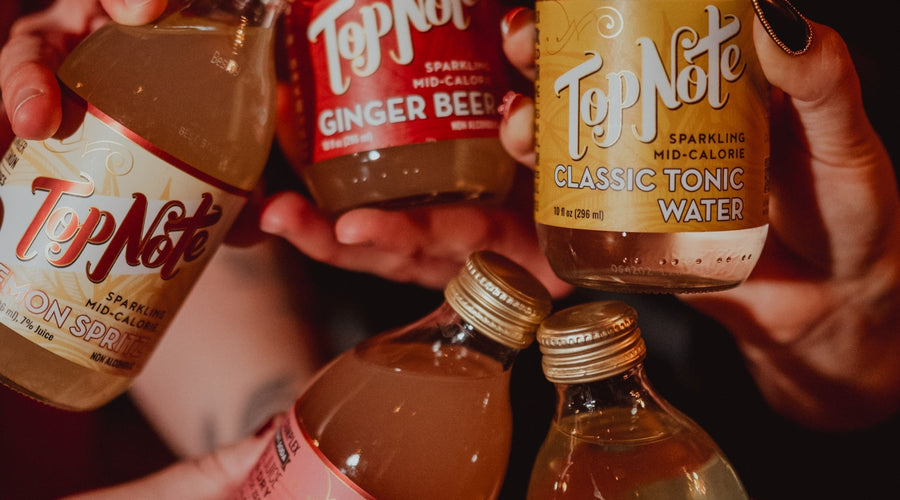
Amaro | Bitter Lemon | Bitter Lemon Tonic Water | Ginger Beer | Grapefruit Soda | Indian Tonic Water | Summer Cocktails
Italian Inspired Cocktails for Festa Italiana
We were invited to make cocktails for Festa Italiana. We found a way to incorporate all the flavors we make into 5 unique drinks.
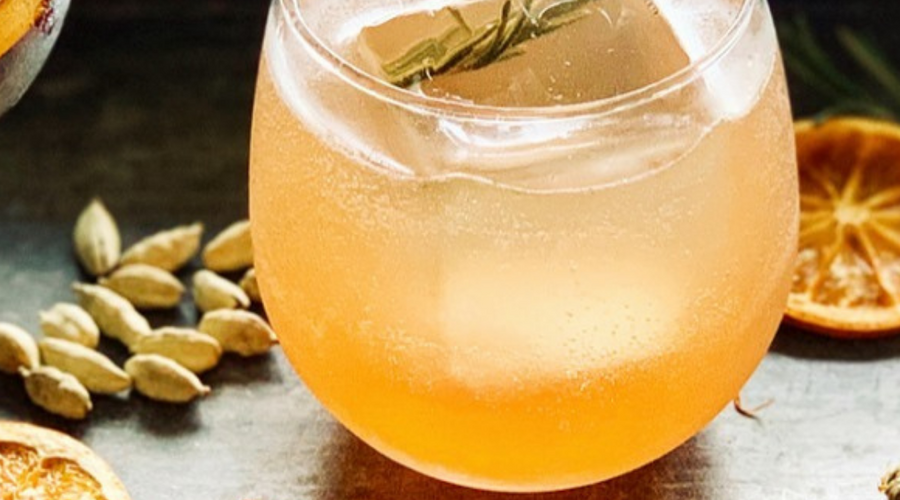
Winter Chill
Lay off the booze and recover with a winter chill. This one has potent energy of OJ and Cider, with spice of Ginger for a soothing mix.
1 oz Orange Juice
2 oz Top Note Tonic Ginger Beer
3 oz Sparkling Cider
4 frozen Cranberries
Mix together juices, and ice. Top with ginger beer. Gently stir. Add 4 cranberries to garnish. Recipe inspired by @chowhound.
Photo by @steph.achter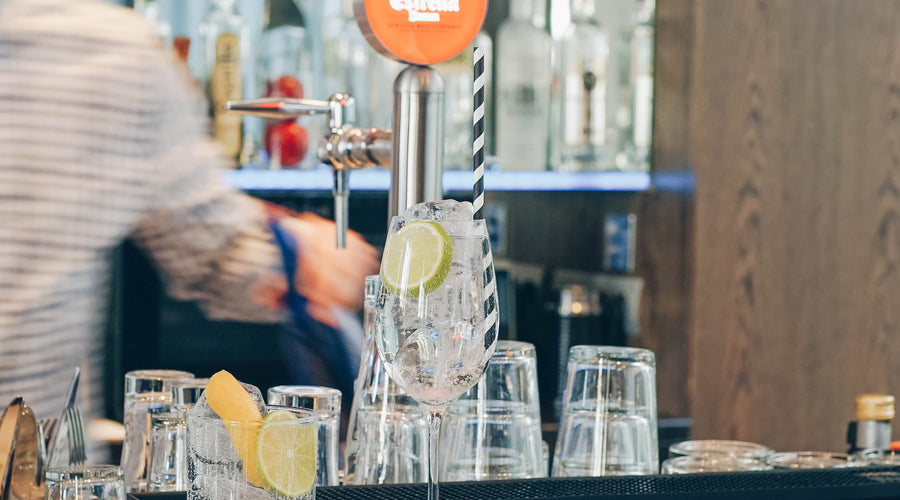
White Port & Tonic
This simple classic Portuguese apéritif is perfect for happy hour. No fancy bar tools necessary!
White Port & Tonic Recipe:
4 oz white port wine
.5 oz lemon juice
4 oz Top Note Indian Tonic or Bitter Lemon Tonic
Optional 2 dashes bitters of your choice
Garnish: fresh citrus and herbs
Stir ingredients together with ice and garnish.

Americano
Rumored to be the Negroni's predecessor, the Americano has become a classic in its own right.
Americano Recipe:
1.5 oz Campari
1.5 oz sweet vermouth
Top Note Club Soda No. 1, to top
Optional 3 dashes orange bitters
Garnish: orange slice
Stir ingredients together with ice and garnish.
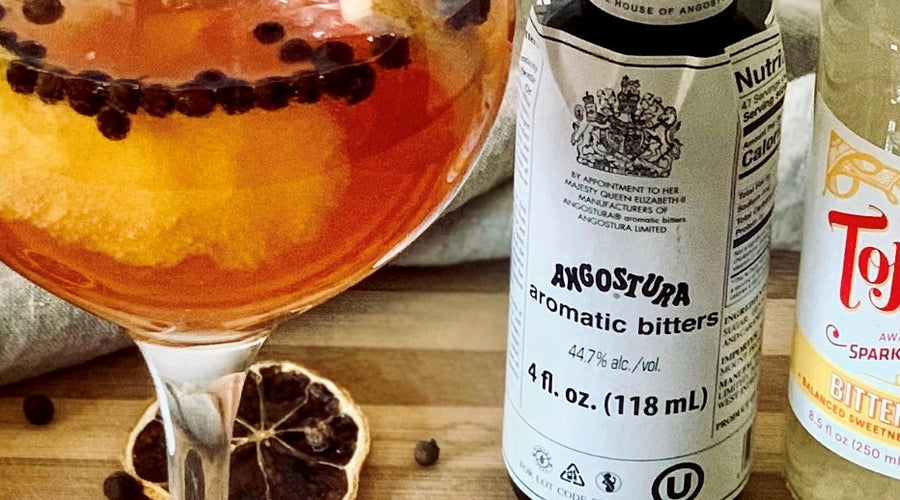
Spanish G&T
The Spanish G&T is all about the garnish. The possibilities are endless, but the idea is to choose garnishes that complement both the gin and the tonic.
London Dry and other juniper-forward gin's pair well with Classic Tonic, fresh herbs, citrus, and juniper berries. American and other floral-forward gins take well to Indian Tonic and fresh seasonal fruits and edible flowers.
Spanish G&T Recipe:
2 oz gin
4 oz tonic*
2 dashes bitters
Squeeze lemon
Cucumber slice (3)
Juniper Berry (3) and or Red Peppercorn (3)
Lemon peel
Add Gin, Bitters, Cucumber, Juniper, Lemon Juice, and Peppercorns to a balloon glass. Add ice and stir. Slowly pour in tonic on side of glass. Carefully lift and stir. Spritz with the lemon peel and drop peel in glass.
Serve with or without a straw.
Photo by @steph.achter
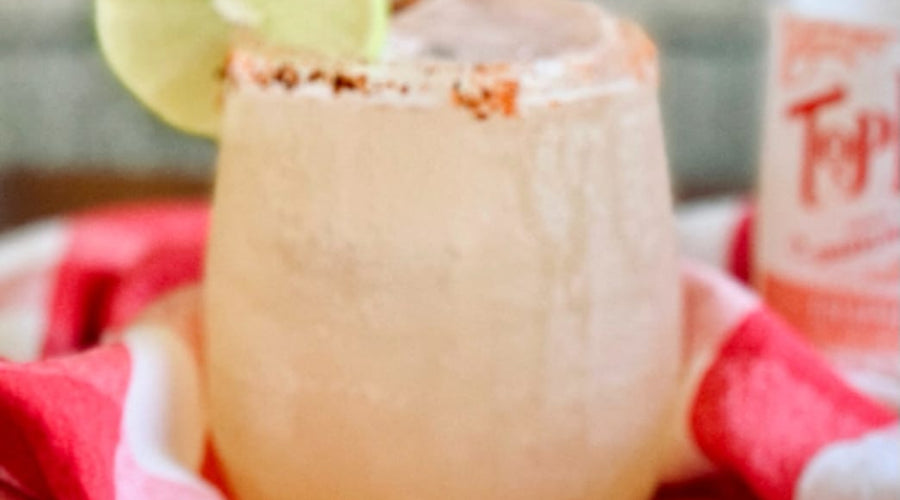
Smoke & Spice Paloma
This might be our favorite way to drink mezcal! Its smokiness can be overbearing in some recipes, but its bold edges are smoothed out and complemented by the sweet, spicy, sour and salty flavors in this delicious Paloma riff.
Smoke & Spice Paloma Recipe:
1 oz mezcal
.75 oz lime juice
.25 oz agave nectar
5 oz Top Note Sparkling Grapefruit Soda
Garnish: glass rimmed with grapefruit and Tajín, lime wheel
Rim your glass with a grapefruit wedge and Tajín then shake off any excess seasoning. Fill glass with ice and set aside (if you’re not making the drink right away, save this step until just before making). Combine all ingredients except Grapefruit Soda in a cocktail shaker filled with ice. Shake and strain into your prepared glass and top with Grapefruit Soda. Stir and garnish with a lime wheel.
Photo by @steph.achter
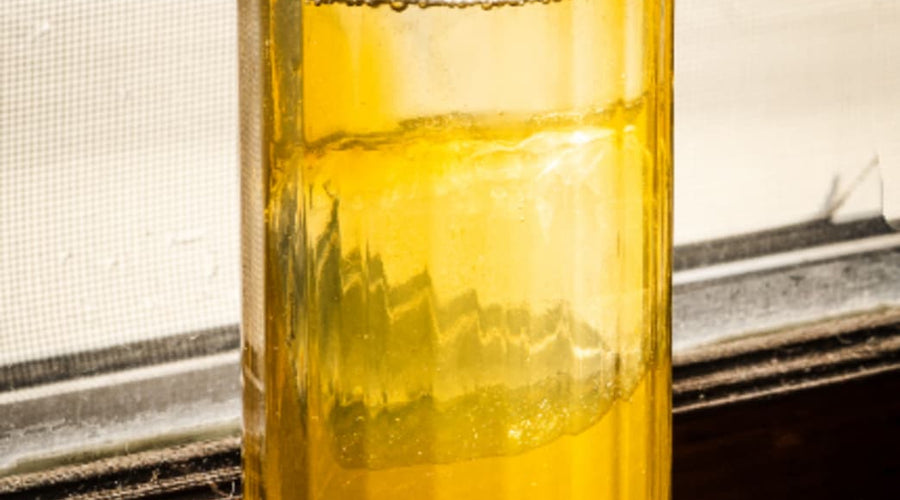
Jon East's Chai Highball
Jon made this for us on our Instagram live series, Highballs at High Noon! While its preparation is simple, this cocktail is incredibly complex.
Be sure to check out our Q&A with Jon and follow him on Instagram for cocktails and cute dog pics.

Image credit: Jon East
Jon East's Chai Highball Recipe:
1.75 oz Twisted Path Chai Liqueur
1 dash Bittermens Hopped Grapefruit Bitters
1 dash Bittermens Buckspice Gingersnap Bitters
4 drops Bittermens Xocalatl Mole Bitters
Garnish: citrus peel
Stir all ingredients together in a highball glass filled with ice and garnish.
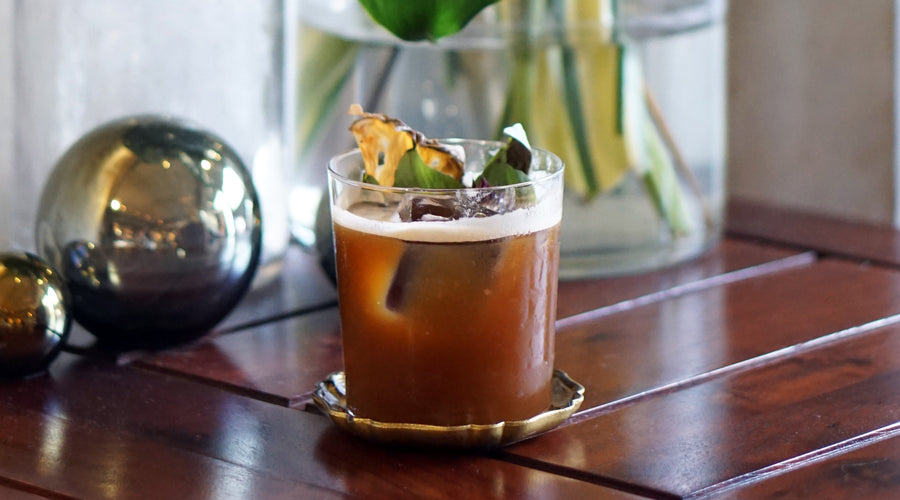
Espresso & Tonic
The freshest, fizziest way to enjoy your favorite coffee!
Espresso & Tonic Recipe:
2 oz freshly-brewed espresso or cold brew concentrate
6 oz Top Note Indian Tonic Water
Optional 3 dashes orange bitters
Garnish: fresh citrus
Pour the Indian Tonic into an ice-filled glass, then slowly pour in the coffee. Garnish.
Photo by @steph.achter
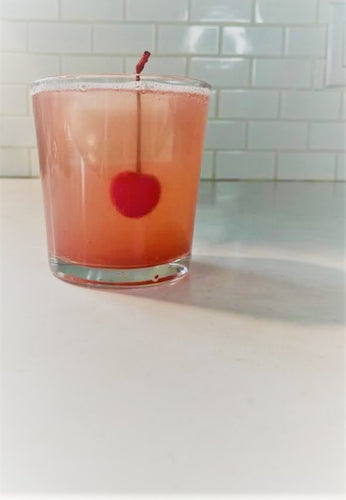
Wisco Love
We loved this cute lovebug of a drink!
Made from all Wisconsin based makers, our friends @sirenshrubs made this one a fun change up for Valentines day.
2 Tablespoons @fedupfoodswi Cranberry Sauce
1 oz @Sirenshrubs Basic Shrub
0.5 oz @tappedmaplesyrup Blueberry
2 -3 Dashes Bittercube Orange Bitters
1/4 oz Lime juice
Top with Top Note Club Soda
Shake the first ingredients up for 30 seconds with ice. Strain into a glass and add Top Note Club. Cherry Garnish


